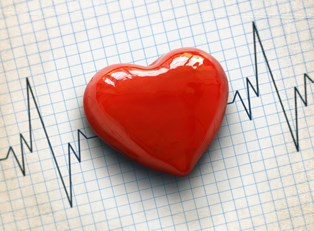What is some basic cholesterol information that everyone should know? This substance is one of the elements of our blood. It is produced by our bodies and is important for its vital activity.It is an organic formation which is contained in the cellular membranes of all living organisms with the exception of the anuclear (prokaryote). It does not dissolve in water, but it does so in fats and organic solvents.
It is produced by the body itself (liver, kidneys, paranephroses, sexual glands, intestinal tract); and admitted to the body through food. Certain cholesterol information to keep mind: a key role in biosynthesis of cholesterol is played by the liver, but the majority of "bad" cholesterol is admitted to our bodies through food.
Cholesterol is the source of energy for skeletal muscles and is needed for the purpose of fixation of proteins. There are two types of cholesterol: "bad" which medically known as low-density lipoprotein (LDL) and "good" which is known as high-density lipoprotein (HDL). HDL carries out a protective function and helps in the formation of new cells in the capacity of building material for cell membranes. The "bad" type is not assimilated by the body anddeposits itself on the artery walls, disturbing the blood supply. Some cholesterol information to know by heart: the main causes of high cholesterol are bad dietary habits (fat foods), smoking, and stress. High cholesterol (yes, the "bad" type) deposits itself on the damaged arteries, in time this layer gradually thickens, and turns into plaques that narrow the space in arteries. Plaques are not only the barriers for the blood flow, but in time they also become inflamed, forming clots that clog up blood vessels.
Cholesterol Symptoms and Cholesterol Levels
Important cholesterol information: if you have high cholesterol, it does not necessarily mean that you will experience certain visible or felt symptoms. This problem is usually discovered by means of blood tests. Test may also reveal high cholesterol levels, when you may be diagnosed with a disease, which may have been caused by high cholesterol. Among these conditions may be coronary artery disease, stroke, peripheral arterial disease or pancreatitis. Some people with particular disorders of fat metabolism, such as familial hypercholesterolemia, may have other symptoms, such as deposits of excessive cholesterol under one's skin. These deposits may cause the swelling of tendons of the hands and feet. However, there are certain symptoms than need to be remembered in learning the necessary cholesterol information: angina pectoris on account of narrowing of coronary heart arteries, pains in legs with certain physical activities, presence of blood clots and ruptures of blood vessel, plaque ruptures and cardiac failure as a result of it, and presence of yellow spots on one's skin, often around one's eyes.
Creating a Diet to Lower LDL Cholesterol
Another piece of cholesterol information that needs to be heard and adhered to particular diets also help in treating high cholesterol. A diet to lower LDL cholesterol is high in plant fiber and vegetables. In order to stop the growth or to decrease it to normal level, there are three simple rules that need to be observed: quit smoking, live a physically active life and observe healthy dietary habits. It is no secret that nicotine increases the overall amount of lipids in the blood, thus no-smoking rule will partially aid in prevention. Physical activity should be evenly distributed throughout one's day spanning mornings, early afternoons and evenings. Even walking during the day or jogging will help. The diets are, of course, much harder to observe.



